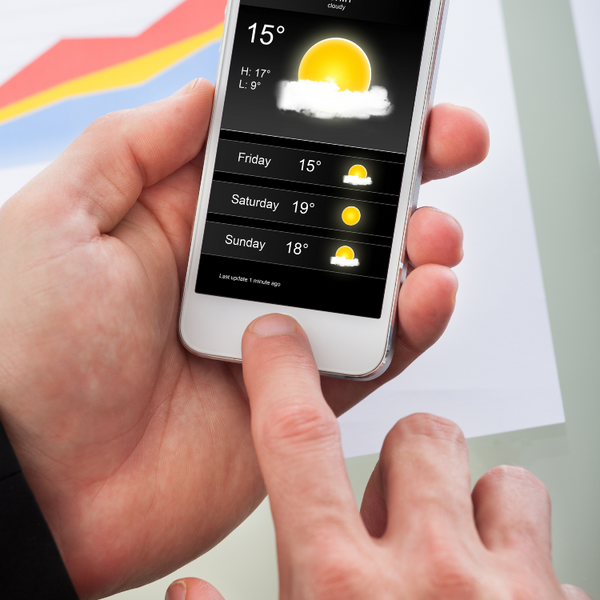Staying warm in cold weather is vitally important for the health of you and your family. Cold weather and temperatures, particularly those below 8 degrees Celsius, may put you at increased risk of flu, pneumonia and hypothermia as well as heart attacks and strokes. Furthermore, it heightens the risk and likelihood of falls and similar injuries.
Although they can affect anyone, the most vulnerable groups include the elderly, disabled, young children, people with long-term health conditions, and people with low household incomes (as they may not be able to afford adequate heating).
The good news is that a lot can be done to mitigate the risks. Here are our top ten tips:
#1 Be prepared
Cold weather can sometimes catch you by surprise. Therefore it is always advisable to ensure that you follow the latest weather forecasts via television, radio, online, or newspapers. Being informed about an impending cold spell in advance allows you to prepare adequately. This may include ensuring that you have adequate food and clothing and a working heating supply.

#2 Heat your home to at least 18 degrees Celsius
As a general rule of thumb, it's recommended to keep your house heated to at least 18 degrees Celsius at all times. Many people typically choose a higher temperature during the day.
As heating is expensive it may be worthwhile checking to see whether you are eligible to receive any form of help with the costs. In the UK, two main types of grants are available: the Winter Fuel Payment and Cold Weather Payment. The Winter Fuel Payment is typically available to people of pension age and the Cold Weather Payment is available to people already eligible for certain benefits when the weather has been recorded as, or is forecast to be zero degrees or less for 7 consecutive days.

#3 Use curtains wisely
Curtains effectively block drafts, keep out cold air, and retain warm air. Use heavy curtains if possible and keep them closed when dark outside and opened when it is light outside especially when the sun is shining. You may find it useful to make opening and closing curtains part of your daily routine.

#4 Close doors and windows to prevent drafts
While it might seem obvious it is crucial to close external doors and windows to prevent warm air escaping and cold air entering. If there are certain areas of the house not in use, it is advisable to shut interlinking doors so that the warm air is trapped in your actual living space. You may also find it useful to seal your doors and windows using weather stripping tape or a draft sweep. If you don't have these readily available, a towel can also serve the purpose.

#5 Get your heating system checked regularly
Make sure that you get your heating system and ventilation checked on a regular basis by a qualified professional. They should be able to identify what appropriate measures if any are necessary. For instance, they might recommend more energy-efficient boilers or attic insulation. As warm air rises and cold air settles attic insulation has huge benefits.
You may also find it useful to seek advice from the Energy Saving Trust. They provide guidance on how to reduce bills and make your home more energy efficient as well as advise on grants and schemes available around the UK.
#6 Use a hot water bottle
Hot water bottles and microwave hot water bottles are great for keeping you warm. You can use them anywhere around the house and apply them directly to your body to warm you up. It is not recommended to apply them to one particular area for more than 15-20 minutes and advisable to use a hot water bottle with a cover or at the very least wrapped with a towel.
Hot water bottles can even be used to heat up your bed before you go to sleep. However, it's not recommended to sleep with them or use a hot water bottle alongside an electric blanket.

#7 Wear appropriate clothing
While this might seem like common sense you should wrap up with extra layers. Every layer adds another coat of insulation keeping your body heat local. Don't forget to keep your feet warm and your head warm too as these are often forgotten about.

#8 Eat warm food and beverages
Eating a warm soup or a hot meal and drinking a hot cup of tea or coffee is an effective way to add energy and heat to your body. This will in turn raise your core temperature. Don't forget that the act of cooking with an oven or cooker will also add heat to your home.

#9 Keep active
Keeping active can help to keep your body warm. The act of moving produces body heat and promotes blood circulation meaning that warm blood gets transported more to areas which are more susceptible to the cold such as fingers and toes. Engaging in vigorous exercise for at least ten minutes daily is a highly effective way to remain active.

#10 Help neighbours and those most vulnerable
After you are happy that you are properly prepared for the cold make sure that your neighbours, relatives and the vulnerable are too. Share your tips and advice and support them with any related tasks which they for any reason may be unable to carry out themselves.

Final word
These are our top ten tips - there are plenty of things you can be doing to help keep you and your family warm at home when the weather gets cold. By adhering to these guidelines, cold weather should never be a concern at home.
We go to great lengths to ensure that all our hot water bottles are easy-to-use, effective and meet the relevant safety standards. You may also find our essential guide useful if you want to learn more about keeping warm safely.





















